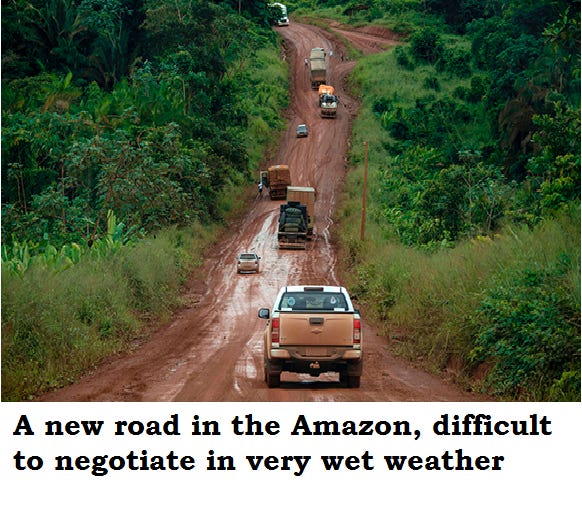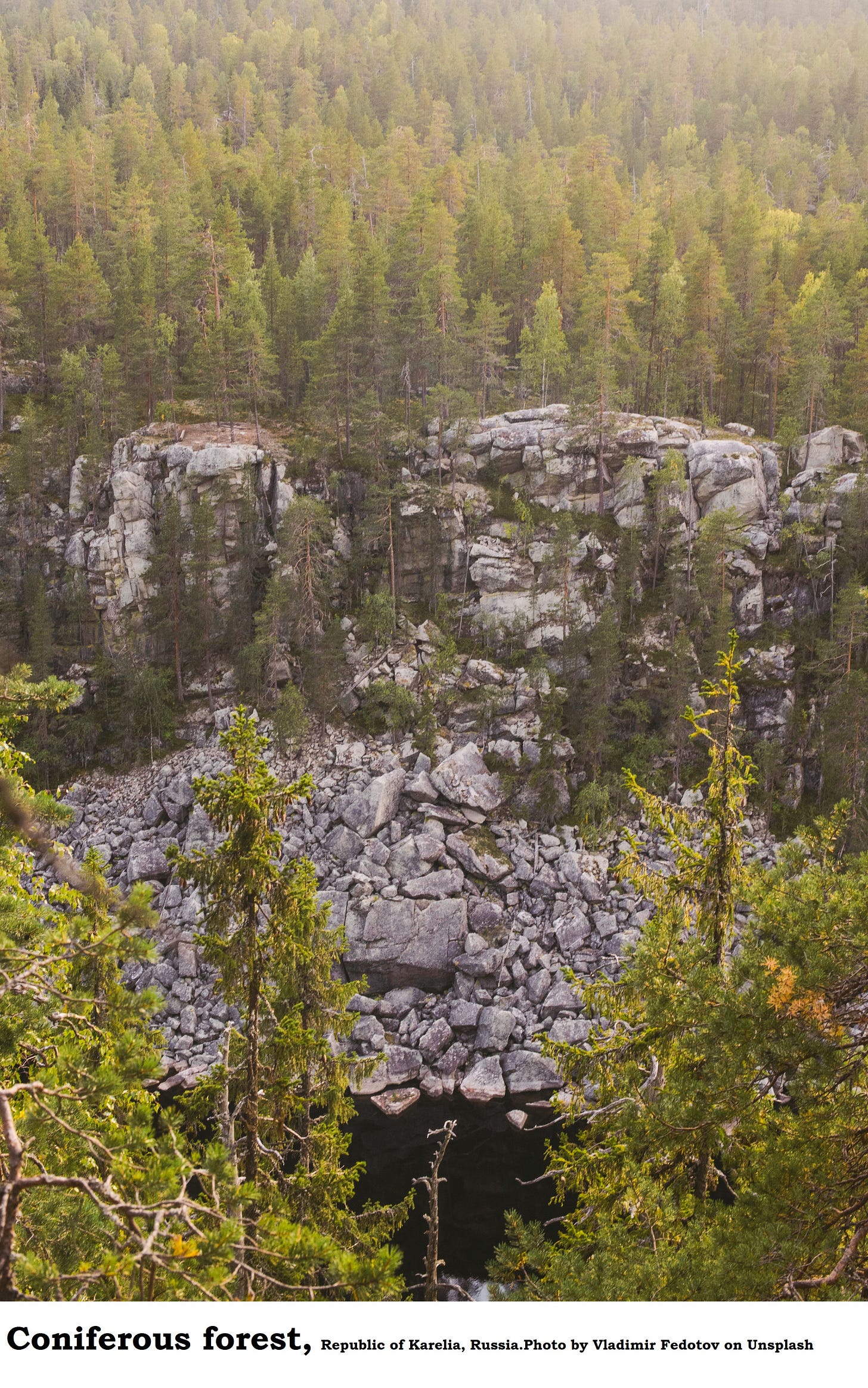Introduction
The world's forests play a crucial role in regulating the global carbon cycle and mitigating the impacts of climate change. However, the distribution and magnitude of forest cover are undergoing significant changes, presenting a range of challenges that must be addressed.
Forests play a critical role in regulating Earth's carbon cycle, acting as vast reservoirs of carbon. Understanding the global distribution and size of these carbon stores is vital for assessing the challenges arising from changing forest cover worldwide.
The Carbon Landscape
The Earth's carbon is primarily stored in four major reservoirs: the lithosphere (rocks and sediments), hydrosphere (oceans and freshwater), cryosphere (glaciers and ice sheets), and biosphere (living organisms, including forests) (Schlesinger & Bernhardt, 2013). The movement of carbon between these reservoirs, known as the carbon cycle, is a crucial driver of global climate patterns.
Lithosphere: The largest storehouse, containing rock formations like limestone (CaCO3) [1].
Biosphere: Forests dominate this sphere, with living biomass storing significant carbon [1].
Atmosphere: The smallest store, but critically important for regulating global climate [1].
Hydrosphere: Oceans absorb atmospheric CO2, a process crucial for mitigating climate change [4].
Cryosphere: Frozen regions like permafrost hold significant carbon, vulnerable to release with warming temperatures [3].
Factors like photosynthesis, respiration, decomposition, combustion, and weathering influence the flow and transfer of carbon between these spheres [2].
Global Carbon Stores and the Importance of Forests
Forests, as part of the biosphere, are a significant store of carbon, with trees and soil accumulating and sequestering vast amounts of CO2 through photosynthesis (Intergovernmental Panel on Climate Change [IPCC], 2019). This carbon storage function of forests is crucial in regulating atmospheric CO2 levels and mitigating the greenhouse effect.
Deforestation: Impacts on the Carbon Cycle and Climate
The worldwide decline in forest cover, primarily due to human activities such as agriculture, urbanization, and resource extraction, is a significant challenge (Hansen et al., 2013). Deforestation not only reduces the ability of forests to sequester carbon but also releases stored carbon back into the atmosphere through combustion and decomposition, further exacerbating global warming (Baccini et al., 2012).
Deforestation, the permanent conversion of forested areas to other land uses, disrupts this delicate balance. Extensive deforestation is occurring in Central and South America, Southeast Asia, and parts of Africa [1]. This not only reduces the biosphere's carbon storage capacity but also releases stored carbon back into the atmosphere through decomposition and burning.
The consequences are far-reaching:
Soil erosion: Exposed soil is vulnerable to wind and water erosion, reducing agricultural productivity and impacting local communities [1].
Disrupted water cycles: Forests play a vital role in regulating rainfall patterns. Deforestation can alter precipitation patterns, leading to increased risk of flooding or desertification [1].
Climate Change: Deforestation is a major contributor to rising CO2 levels, accelerating global warming and its associated effects like extreme weather events [2].
While Northern Africa experienced significant forest loss between 1990 and 2000, deforestation rates have slowed there [1]. This highlights the need for region-specific solutions.
The loss of forests in regions like Central and South America, Eastern and Southern Africa, and Southeast Asia has had profound impacts on the global carbon budget (Achard et al., 2014). The resulting changes in land cover and reduced carbon sequestration capacity have contributed to the rise in atmospheric CO2 levels, which in turn have led to more pronounced climate change impacts, such as increased frequency and severity of extreme weather events (IPCC, 2021).
Afforestation: Challenges and Opportunities
Afforestation, the establishment of new forests, offers a potential solution. However, significant challenges exist:
Land availability: Suitable land for afforestation is often scarce, competing with needs for agriculture and human settlements [1]. This is particularly evident in areas experiencing afforestation like Europe, where increases are relatively small [1].
In contrast, some regions, such as East Asia, Western and Central Asia, Europe, and the Caribbean, have experienced gains in forest cover through afforestation efforts (Food and Agriculture Organization [FAO], 2020). However, the challenges associated with afforestation should not be overlooked.
Afforestation is typically more feasible in sparsely populated areas, where land use has not already been heavily committed to other human activities like agriculture or urban development (Bastin et al., 2019). The greater challenge lies in afforesting areas closer to population centres, where competing land-use demands make it more difficult to establish and maintain new forest cover.
The African continent's Great Green Wall initiative, aimed at combating desertification through a cross-border afforestation effort, serves as an example of the complexities involved in coordinating large-scale forest restoration projects across multiple countries (Sacande & Viciani, 2019). While crucial, its success hinges on international cooperation, a complex challenge in itself [1].
Emerging Threats: Deforestation in the Amazon and Beyond
The recent increase in deforestation rates in the Amazon rainforest, driven by factors such as agricultural expansion, infrastructure development, and policy changes, is a pressing concern (Barlow et al., 2020). The loss of this vital carbon sink and biodiversity hotspot poses significant risks to the global climate and ecological systems. This highlights the need for sustainable forest management practices alongside afforestation efforts.
Addressing the Challenges: Holistic Approaches
The changing forest cover worldwide presents a complex set of challenges. Deforestation disrupts the carbon cycle and exacerbates climate change. While afforestation offers a potential solution, challenges in land availability and international cooperation need to be addressed. Sustainable management of existing forests is equally important. Moving forward, a multi-pronged approach is required to ensure healthy forests and a stable climate for the future, that combines scientific understanding, policy interventions, and community engagement. Strengthening international cooperation, implementing sustainable forest management practices, and empowering local communities to participate in conservation efforts are crucial steps in preserving the world's forests and their essential role in regulating the carbon cycle and mitigating climate change.
Main References:
Achard, F., Beuchle, R., Mayaux, P., Stibig, H. J., Bodart, C., Brink, A., ... & Simonetti, D. (2014). Determination of tropical deforestation rates and related carbon losses from 1990 to 2010. Global change biology, 20(8), 2540-2554.
Baccini, A., Goetz, S. J., Walker, W. S., Laporte, N. T., Sun, M., Sulla-Menashe, D., ... & Houghton, R. A. (2012). Estimated carbon dioxide emissions from tropical deforestation improved by carbon-density maps. Nature climate change, 2(3), 182-185.
Barlow, J., Berenguer, E., Carmenta, R., & França, F. (2020). Clarifying Amazonia's burning crisis. Global change biology, 26(2), 319-321.
Bastin, J. F., Finegold, Y., Garcia, C., Mollicone, D., Rezende, M., Routh, D., ... & Crowther, T. W. (2019). The global tree restoration potential. Science, 365(6448), 76-79.
Food and Agriculture Organization. (2020). Global Forest Resources Assessment 2020: Main report. Rome.
Hansen, M. C., Potapov, P. V., Moore, R., Hancher, M., Turubanova, S. A., Tyukavina, A., ... & Townshend, J. R. (2013). High-resolution global maps of 21st-century forest cover change. science, 342(6160), 850-853.
Intergovernmental Panel on Climate Change. (2019). Climate Change and Land: an IPCC special report on climate change, desertification, land degradation, sustainable land management, food security, and greenhouse gas fluxes in terrestrial ecosystems.
Intergovernmental Panel on Climate Change. (2021). Climate Change 2021: The Physical Science Basis. Contribution of Working Group I to the Sixth Assessment Report of the Intergovernmental Panel on Climate Change.
Sacande, M., & Viciani, I. (2019). The Great Green Wall: Hope for the Sahara and the Sahel. Food and Agriculture Organization of the United Nations.
Schlesinger, W. H., & Bernhardt, E. S. (2013). Biogeochemistry: an analysis of global change. Academic press.
Additional References
[1] Food and Agriculture Organization of the United Nations. (2020). Global Forest Resources Assessment 2020 [FAO Forest Resources Assessment]. https://www.fao.org/3/ca8642en/CA8642EN.pdf
[2] Friedlingstein, P., & Arora, V. (2019). The history of atmospheric CO2 concentration. Nature Geoscience, 12(3), 236-246. https://www.nature.com/articles/ncomms13428
[3] Schuur, E. A. G., McGuire, A. D., Schädel, C., Etienne, S., Forbes, B. C., Zhuang, Y., ... & Koven, C. H. (2015). Climate change and the permafrost carbon feedback. Nature, 520(7546), 171-179. https://www.nature.com/articles/nature14338
[4] Canadell, J. G., Le Quéré, C., Raupach, M. R., & Steffen, W. (2005). Current atmospheric CO2 flux to the sea. Global Biogeochemical Cycles, 1
This article can be used by senior students to help them answer the following question.
Describe the challenges arising out of the changing forest cover worldwide.








